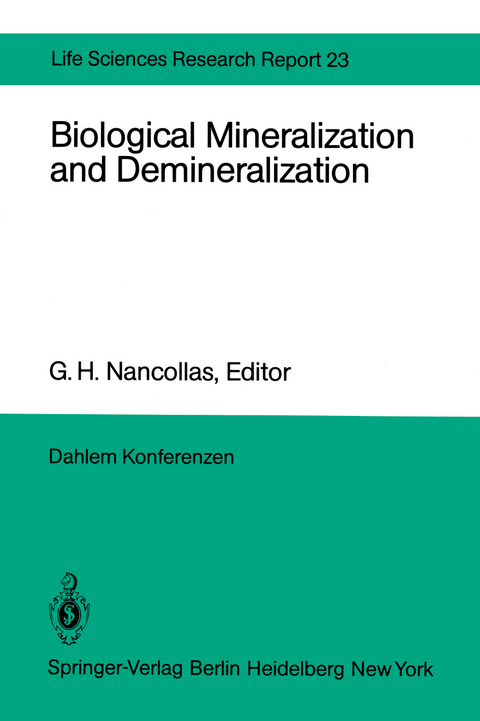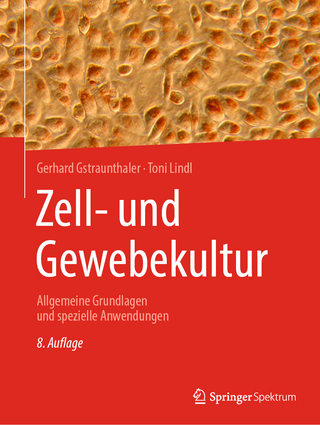
Biological Mineralization and Demineralization
Springer Berlin (Verlag)
978-3-642-68576-7 (ISBN)
The Solubility Concept.- Nucleation.- The Mechanisms of Crystal Growth and Dissolution.- Phase Transformation During Precipitation of Calcium Salts.- Structures of Biological Minerals.- Structural Properties of Cells Related to Tissue Mineralization.- Structure of the Organic Matrix: Collagen Structure (Chemical).- Components of the Organic Matrix: Proteoglycans.- Three Systems of Biomineralization in Plants with Comments on the Associated Organic Matrix.- Structure of the Organic Matrix in Mollusc Shells and Avian Eggshells.- Mechanisms of Normal Mineralization in Bone and Cartilage.- Mechanisms of Normal Biological Mineralization of Calcium Carbonates.- Abnormal Mineralization.- Pathologic Mineralization, Nucleation, Growth, and Retention.- Mechanisms and Regulation of Normal and Pathologic Demineralization.- Mechanism of Dental Caries.- Structure, Properties, and Function of Mineralized Tissue Components Group Report.- Mechanisms of Mineralization (Normal) Group Report.- Mechanisms of Pathological Mineralization Group Report.- Mechanisms of Normal and Pathological Demineralization Group Report.- List of Participants.- Author Index.
| Erscheint lt. Verlag | 19.11.2011 |
|---|---|
| Reihe/Serie | Dahlem Workshop Report | Life Sciences Research Report |
| Mitarbeit |
Assistent: I. L. Matthews, I. I. Reynolds, W. G. Robertson, K. Simkiss |
| Zusatzinfo | VIII, 415 p. |
| Verlagsort | Berlin |
| Sprache | englisch |
| Maße | 152 x 229 mm |
| Gewicht | 621 g |
| Themenwelt | Naturwissenschaften ► Biologie ► Mikrobiologie / Immunologie |
| Naturwissenschaften ► Biologie ► Zellbiologie | |
| Schlagworte | biological • Calcium • Cells • Crystal • Demineralisation • Influence • Information • Mineral • Mineralisation • Mutant • Phase • plants • Regulation • tissue • Vertebrates |
| ISBN-10 | 3-642-68576-5 / 3642685765 |
| ISBN-13 | 978-3-642-68576-7 / 9783642685767 |
| Zustand | Neuware |
| Haben Sie eine Frage zum Produkt? |
aus dem Bereich


